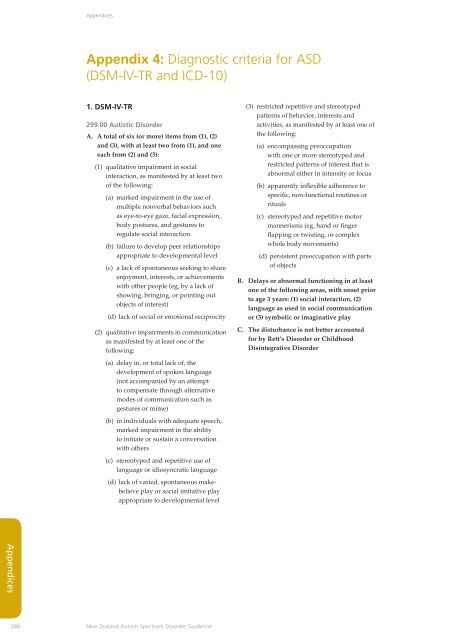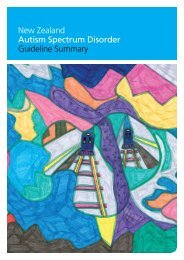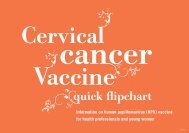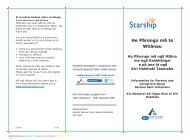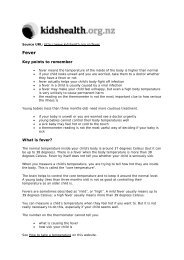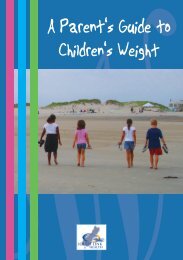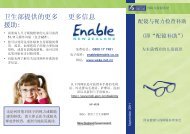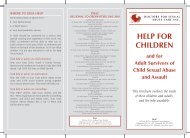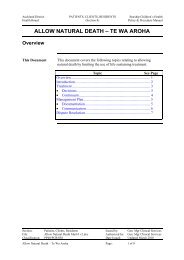New Zealand Autism Spectrum Disorder Guideline - Ministry of Health
New Zealand Autism Spectrum Disorder Guideline - Ministry of Health
New Zealand Autism Spectrum Disorder Guideline - Ministry of Health
You also want an ePaper? Increase the reach of your titles
YUMPU automatically turns print PDFs into web optimized ePapers that Google loves.
Appendices<br />
Appendix 4:Diagnostic criteria for ASD<br />
(DSM-IV-TR and ICD-10)<br />
1. DSM-IV-TR<br />
299.00 Autistic <strong>Disorder</strong><br />
A. A total <strong>of</strong> six (or more) items from (1), (2)<br />
and (3), with at least two from (1), and one<br />
each from (2) and (3):<br />
(1) qualitative impairment in social<br />
interaction, as manifested by at least two<br />
<strong>of</strong> the following:<br />
(a) marked impairment in the use <strong>of</strong><br />
multiple nonverbal behaviors such<br />
as eye-to-eye gaze, facial expression,<br />
body postures, and gestures to<br />
regulate social interaction<br />
(b) failure to develop peer relationships<br />
appropriate to developmental level<br />
(c) a lack <strong>of</strong> spontaneous seeking to share<br />
enjoyment, interests, or achievements<br />
with other people (eg, by a lack <strong>of</strong><br />
showing, bringing, or pointing out<br />
objects <strong>of</strong> interest)<br />
(d) lack <strong>of</strong> social or emotional reciprocity<br />
(2) qualitative impairments in communication<br />
as manifested by at least one <strong>of</strong> the<br />
following:<br />
(a) delay in, or total lack <strong>of</strong>, the<br />
development <strong>of</strong> spoken language<br />
(not accompanied by an attempt<br />
to compensate through alternative<br />
modes <strong>of</strong> communication such as<br />
gestures or mime)<br />
(b) in individuals with adequate speech,<br />
marked impairment in the ability<br />
to initiate or sustain a conversation<br />
with others<br />
(c) stereotyped and repetitive use <strong>of</strong><br />
language or idiosyncratic language<br />
(d) lack <strong>of</strong> varied, spontaneous makebelieve<br />
play or social imitative play<br />
appropriate to developmental level<br />
(3) restricted repetitive and stereotyped<br />
patterns <strong>of</strong> behavior, interests and<br />
activities, as manifested by at least one <strong>of</strong><br />
the following:<br />
(a) encompassing preoccupation<br />
with one or more stereotyped and<br />
restricted patterns <strong>of</strong> interest that is<br />
abnormal either in intensity or focus<br />
(b) apparently inflexible adherence to<br />
specific, non-functional routines or<br />
rituals<br />
(c) stereotyped and repetitive motor<br />
mannerisms (eg, hand or finger<br />
flapping or twisting, or complex<br />
whole body movements)<br />
(d) persistent preoccupation with parts<br />
<strong>of</strong> objects<br />
B. Delays or abnormal functioning in at least<br />
one <strong>of</strong> the following areas, with onset prior<br />
to age 3 years: (1) social interaction, (2)<br />
language as used in social communication<br />
or (3) symbolic or imaginative play<br />
C. The disturbance is not better accounted<br />
for by Rett’s <strong>Disorder</strong> or Childhood<br />
Disintegrative <strong>Disorder</strong><br />
Appendices<br />
286<br />
<strong>New</strong> <strong>Zealand</strong> <strong>Autism</strong> <strong>Spectrum</strong> <strong>Disorder</strong> <strong>Guideline</strong>


